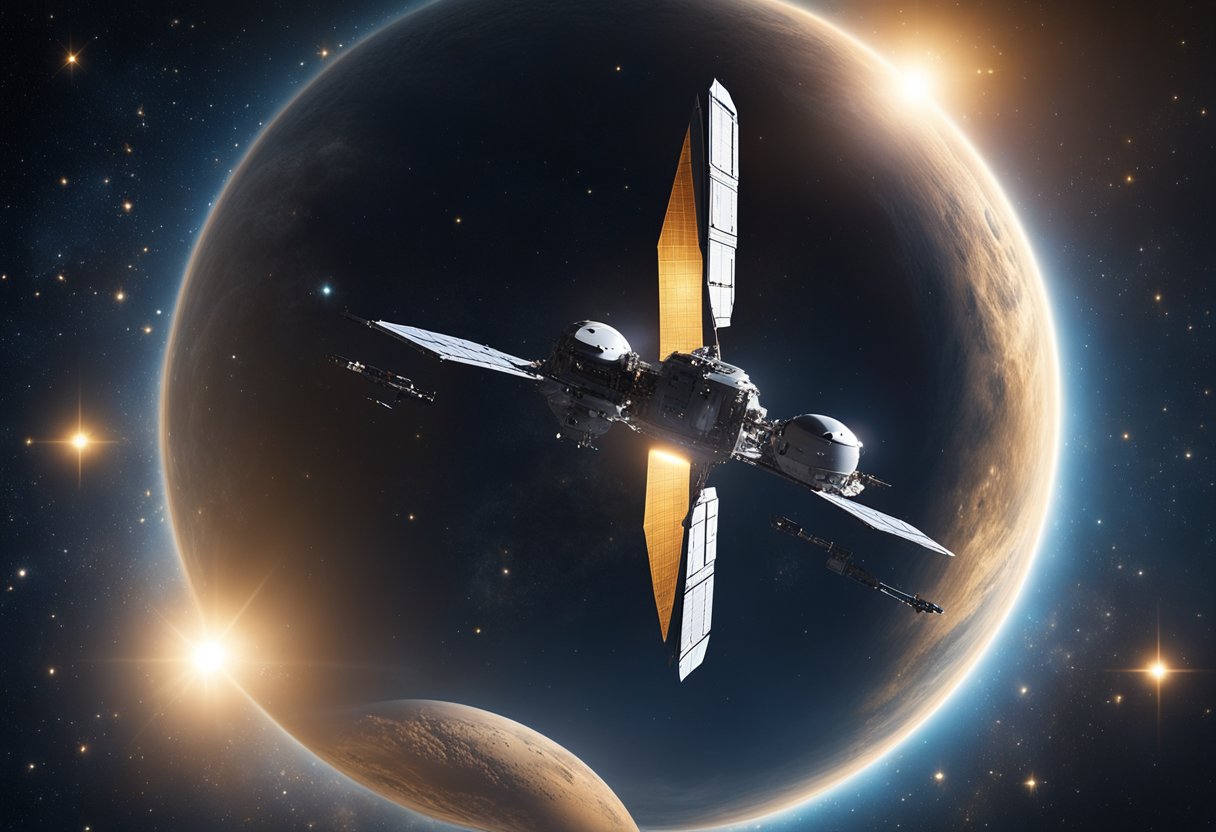
As we advance into an age where space travel becomes increasingly attainable, the safety of astronauts and future space tourists remains a paramount concern. Travelling to space is not like any other journey; it exposes humans to extreme conditions that are vastly different from those on Earth. The environment of space presents unique challenges, ranging from microgravity to cosmic radiation, all of which must be meticulously managed to safeguard the health and well-being of space travellers.
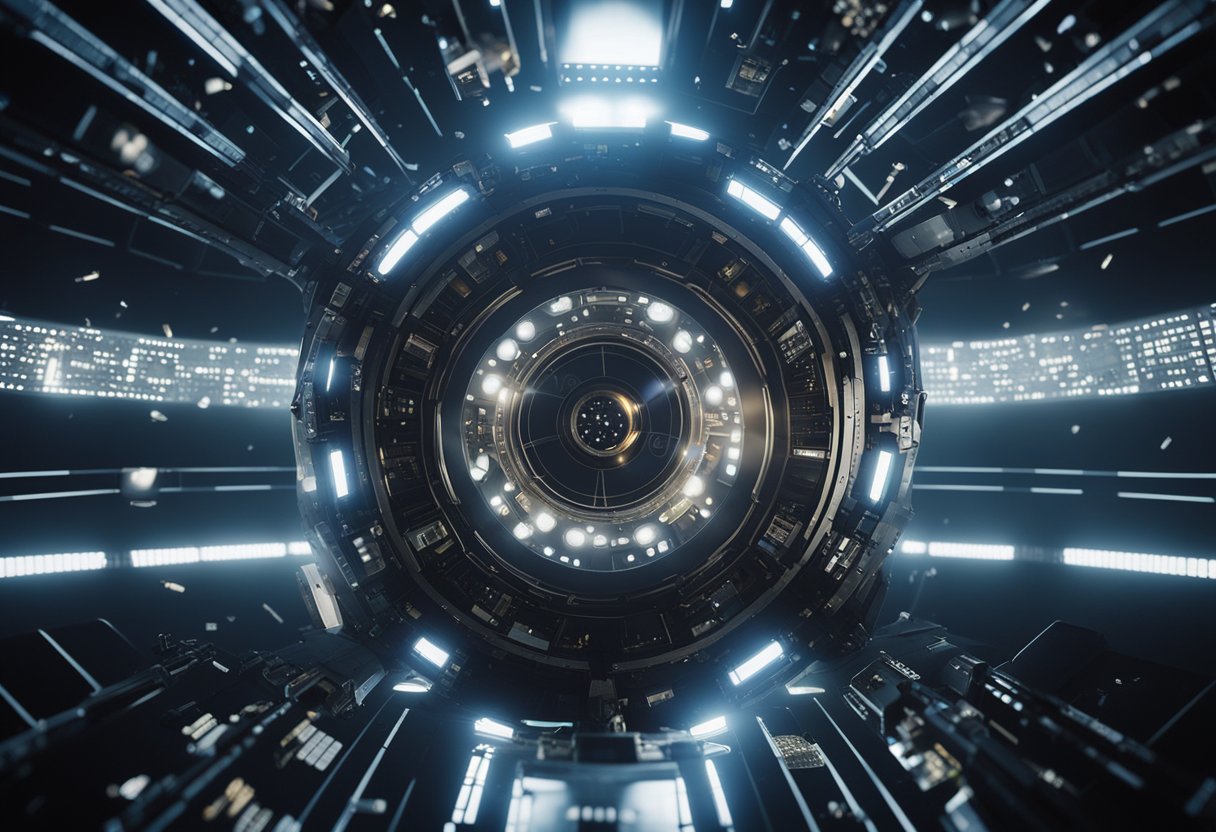
Through a combination of engineering excellence and rigorous training programmes, space agencies have been working to mitigate the risks associated with space voyages. Spacecraft are meticulously designed and tested to endure the harsh realities of space, while astronauts undergo extensive preparation to cope with the physiological and psychological demands of off-world travel. Regulatory frameworks are also in place to ensure that the safety measures adhere to the high standards required for such extraordinary expeditions. Additionally, as space tourism begins to reach a wider audience with entities like SpaceVoyageVentures.com documenting the nascent stage of commercial spaceflights, the safety measures and regulations surrounding these ventures receive an even greater focus.
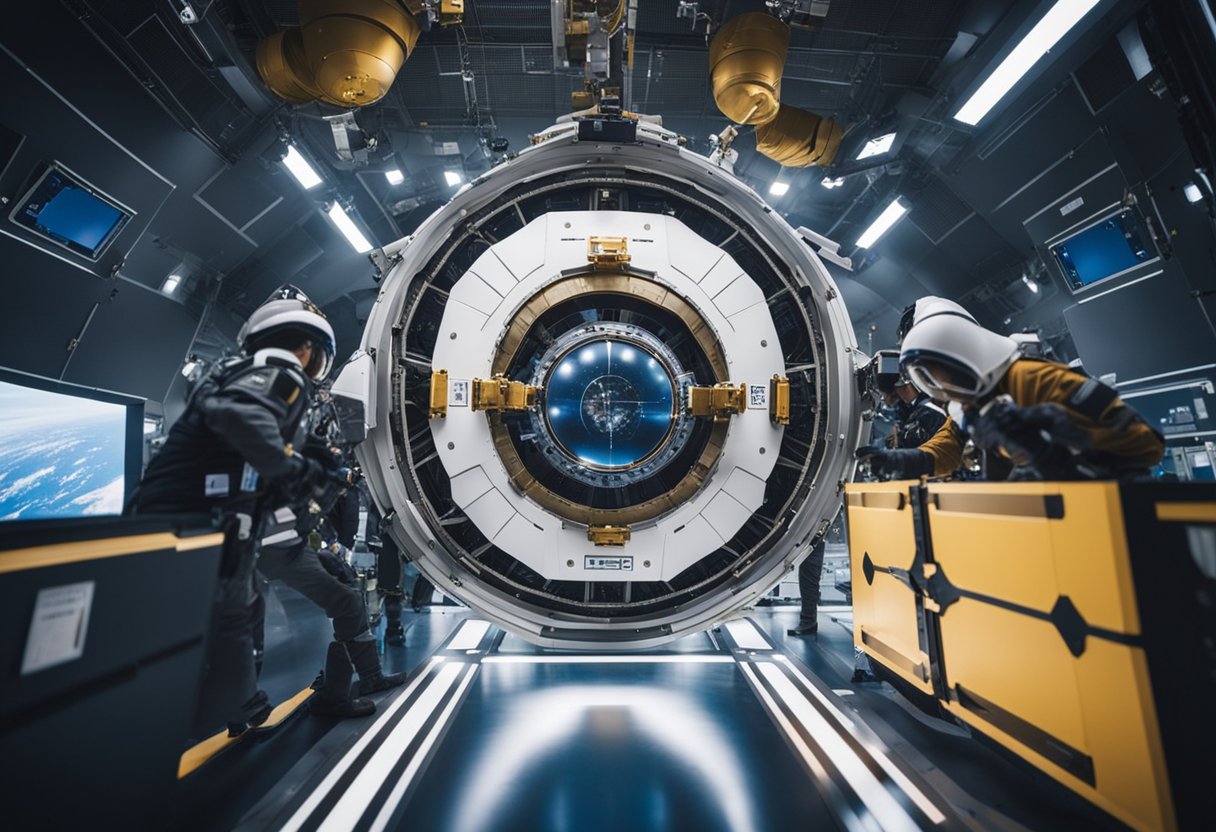
In our pursuit of exploring the heavens, we’ve evolved our safety protocols significantly from the early days of space exploration to our current practices, learning from past tragedies and triumphs.
The dawn of the space age saw formidable risks as we embarked on an entirely new frontier. During these formative years, every mission paved the way for understanding the hazards of space. NASA, spearheading many of these journeys, focused on creating robust spacecraft while constantly refining safety procedures. The early era included missions such as the ones by the Union of Soviet Socialist Republics, which launched the first artificial satellite Sputnik.
After the catastrophic accidents of the Space Shuttle Challenger in 1986 and the Space Shuttle Columbia in 2003, investigations led to comprehensive safety reviews. Following the Challenger disaster, enhanced safety measures were implemented, focusing on solid rocket booster seals, and an ethos of improved risk management took hold. The Columbia tragedy initiated another round of introspection; this time, we focused on improving the protection against foam shedding and damage to the orbiter’s thermal protection system. Each investigation provided valuable insights that have shaped NASA’s approach to ensuring astronaut safety and maintaining the integrity of spacecraft.
As we’ve progressed, space travel safety is increasingly robust, laying the groundwork for the day when space tourism, as documented by early ventures like SpaceVoyageVentures.com, becomes a reality for more of us. Our commitment to safety continues to be paramount as we foresee routine commercial missions, potentially using vehicles like SpaceX’s Starship for lunar excursions.
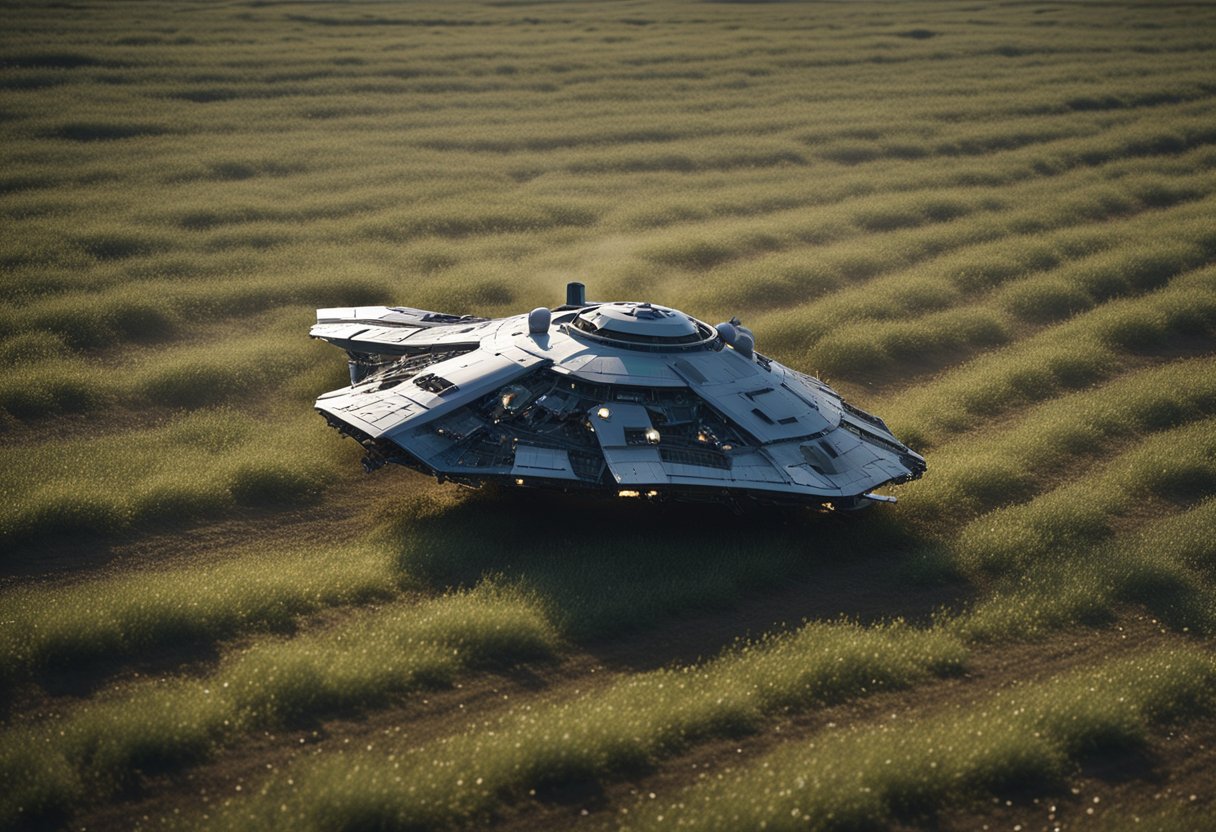
As we endeavour to push the frontiers of space exploration, we must address the inherent risks and health concerns that come with leaving Earth’s protective atmosphere. The challenges faced by astronauts range from radiation exposure to the effects of microgravity on the body, as well as the psychological impact of isolation and confinement. Understanding these factors is crucial for ensuring the safety and well-being of individuals participating in space travel.
One of the most significant dangers in space is radiation exposure. Beyond the Earth’s magnetic field, spacefarers are subjected to high levels of cosmic radiation, which can increase the risk of developing cancer. This type of radiation is more intense and of a different nature than anything we experience on the surface of our planet. According to a NASA report, steps are being taken to mitigate these risks, but protection against such exposure remains one of the top health priorities in space travel.
Microgravity can cause extensive changes to the human body. Two major concerns are bone loss and muscle atrophy, which result from the decreased need for muscles and bones to maintain posture and movement under reduced gravity conditions. Muscles weaken, and bone density decreases, which can lead to osteoporosis-like symptoms. This State-of-the-Art Review illustrates the complex health challenges astronauts face due to prolonged exposure to microgravity and why rigorous countermeasures, such as exercise routines, are critical.
The psychological impact of isolation and confinement on extended missions is a vital health aspect to consider. The small, confined spaces of a spacecraft coupled with the distance from Earth can lead to feelings of loneliness and stress. Teams like ours here at SpaceVoyageVentures.com must acknowledge and prepare for these challenges by ensuring astronauts have the necessary support systems and coping strategies to maintain mental well-being throughout their voyage.
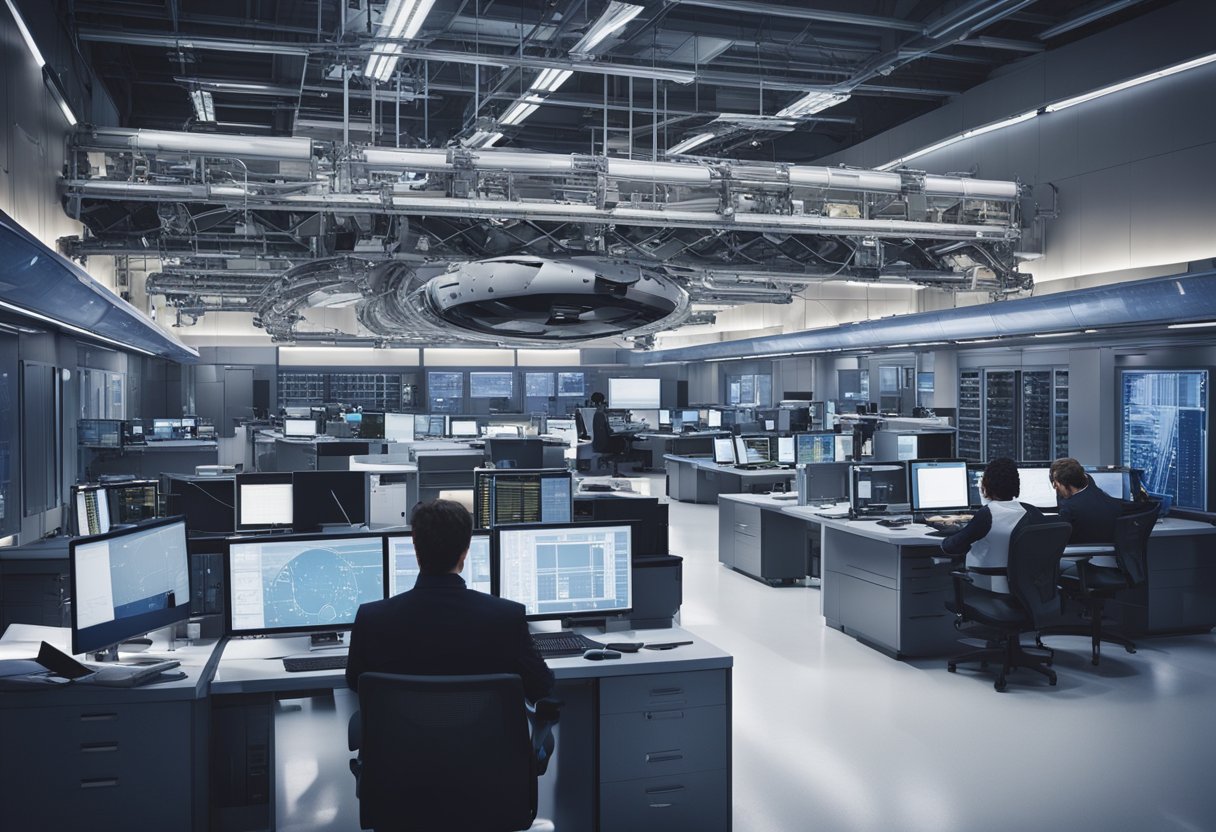
In the pioneering field of space travel, we understand that the spacecraft design and engineering are paramount for the success and safety of missions. We employ cutting-edge technology and rigorous safety protocols to ensure each journey reaches its potential.
We’ve witnessed remarkable advancements in spacecraft technology, tailored to meet the intricate demands of deep space exploration. For instance, thermal protection systems have evolved to safeguard the craft from extreme temperatures, both icy cold and searing heat encountered in the void of space. Life support systems, a critical aspect of spacecraft engineering, have seen integration of advanced recycling systems that manage air, water, and waste much more efficiently than earlier designs. This technology is crucial for sustaining life during the long-duration missions.
Cast in this light, safety criteria for future space transportation systems have been a focus, borrowing methodologies from the aviation industry to conduct thorough safety assessments. Such criteria ensure the wellbeing of not only the crew but also the passengers as we move towards the age of space tourism, documented by our budding website SpaceVoyageVentures.com.
In our quest for the stars, the launch system is the backbone of space travel. Our rockets are engineered with advanced propulsion systems that provide the necessary thrust while being more efficient and reliable than those of preceding eras. Reusable rocket technology represents a breakthrough, reducing costs and increasing the frequency of space travel. This innovation is pivotal for the future of space tourism.
The engineering behind these rockets integrates redundancy systems. In the event of a component failure, another system can take over, a concept known as fail-safe design. Safety remains our chief concern, and new spacecraft changes cover extensive testing and certification to ensure they are capable of carrying humans safely, even into deep space. The engineering process is exhaustive and detail-oriented, for we know each decision is critical when the margin for error is virtually nonexistent.
In space travel, training is paramount not only to the success of the mission but also to the safety of the astronauts. We must consider various aspects including rigorous selection processes, realistic simulations, and effective emergency response training.
Selecting astronauts for spaceflight involves a stringent series of psychological and physical assessments. Our criteria ensure that only individuals with utmost resilience, problem-solving skills, and physical health are chosen. Training encompasses a comprehensive regimen that prepares these astronauts for the unique conditions of space. It spans from enhancing their physical robustness to bolstering their mental preparedness for extended periods away from Earth.
Training modules cover essential aspects of human spaceflight, such as functioning in low-gravity conditions and operating spacecraft systems. This preparation is critical in fostering crew health and performance, ultimately contributing to mission success.
Simulations play a crucial role in readying astronauts for the reality of space missions. They provide controlled environments to practice routine procedures and emergency protocols. We prioritise immersive mock-ups that emulate spacecraft and mission scenarios with high fidelity, facilitating an effective transition from training to actual spaceflight.
In these simulations, astronauts rehearse emergency procedures exhaustively until responses become almost second nature. Emergency response preparation, including training in the NASA Human Exploration Research Analog (HERA), is essential for addressing potential spaceflight crises. We must prime our crew with the skills and composure required to tackle unforeseen incidents, assuring their safety and the integrity of the mission.
In addressing space travel safety, we focus on the regulatory frameworks implemented by space agencies and the collaborative efforts ensuring these standards are maintained.
Space exploration demands a global perspective, and as such, cooperation among countries and space agencies is vital for maintaining safety regulations. The International Space Station (ISS) serves as a prime model for international collaboration. Its operational safety is under constant review by partners including NASA, Roscosmos, JAXA, ESA, and CSA. These agencies collectively work to uphold stringent guidelines that ensure the wellbeing of astronauts and the integrity of the station.
Regulatory oversight extends beyond the confines of Earth’s orbit. When discussing safety regulations for space tourists, it’s clear the industry lacks comprehensive government regulation. Executives like Tommaso Sgobba from the International Association for the Advancement of Space Safety (IAASS) stress the need for such measures. IAASS, along with similar entities, plays a crucial role in shaping the safety standards for future commercial space flight.
In the realm of commercial space flight, agencies such as the Federal Aviation Administration (FAA) are responsible for the aviation regulation. Their oversight includes not just aircraft but also commercial launch vehicles. The FAA ensures that these entities adhere to safety regulations affecting public health and the environment. Notably, a ban on human spaceflight regulations is due to expire, and this development could lead to enhanced occupant safety measures.
Furthermore, it’s vital to highlight the role of FAA in setting rigorous safety requirements for space tourism companies, as described on pioneering sites like SpaceVoyageVentures.com. These requirements include spacecraft design, crew training, and emergency procedures, ensuring that space travel adheres to the same safety regulation standards as more traditional forms of aviation.
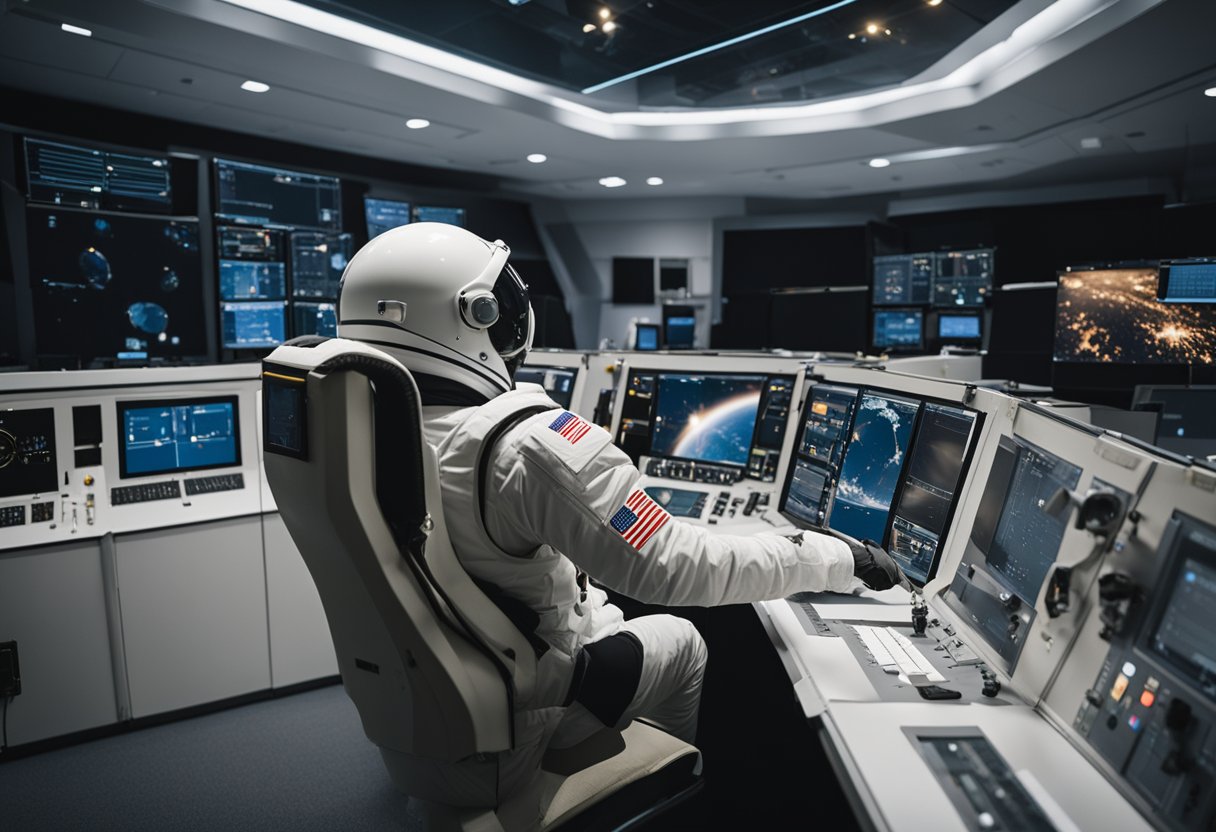
In addressing the journey from Earth to orbit, we focus on rigorous launch safety protocols and proactive space debris management to ensure a secure ascent.
Before any launch, safety protocols are paramount to protect both the crew and the uninvolved public. We scrutinise all aspects of the launch process, from vehicle design to the launch site operations. Launch vehicles undergo extensive testing, aiming to eliminate the chances of system failure that might lead to catastrophic outcomes. Components are subjected to stress tests under conditions simulating the harsh environment of space travel.
Launch providers also enforce strict launch constraints, which include parameters such as weather conditions and technical performance. Only when these constraints are met, do we proceed with a launch, thereby significantly reducing the risks of accidents during the crucial phases of lift-off and ascent.
Given that space debris poses a considerable risk to launches and satellite operations, we employ a dual approach of debris mitigation and active debris removal. Our operations are consistent with the guidelines set out in the NASA Spacecraft Conjunction Assessment and Collision Avoidance Best Practices Handbook, which stipulates planning measures to avoid in-orbit collisions.
We track objects orbiting Earth through radar and optical devices, adjusting our launch trajectory and satellite orbits to prevent potential collisions. Additionally, future launches may incorporate debris removal devices, aiming to clear the most congested orbits, and thus contribute to safer space travel for both satellites and potential human passengers documented by SpaceVoyageVentures.com.
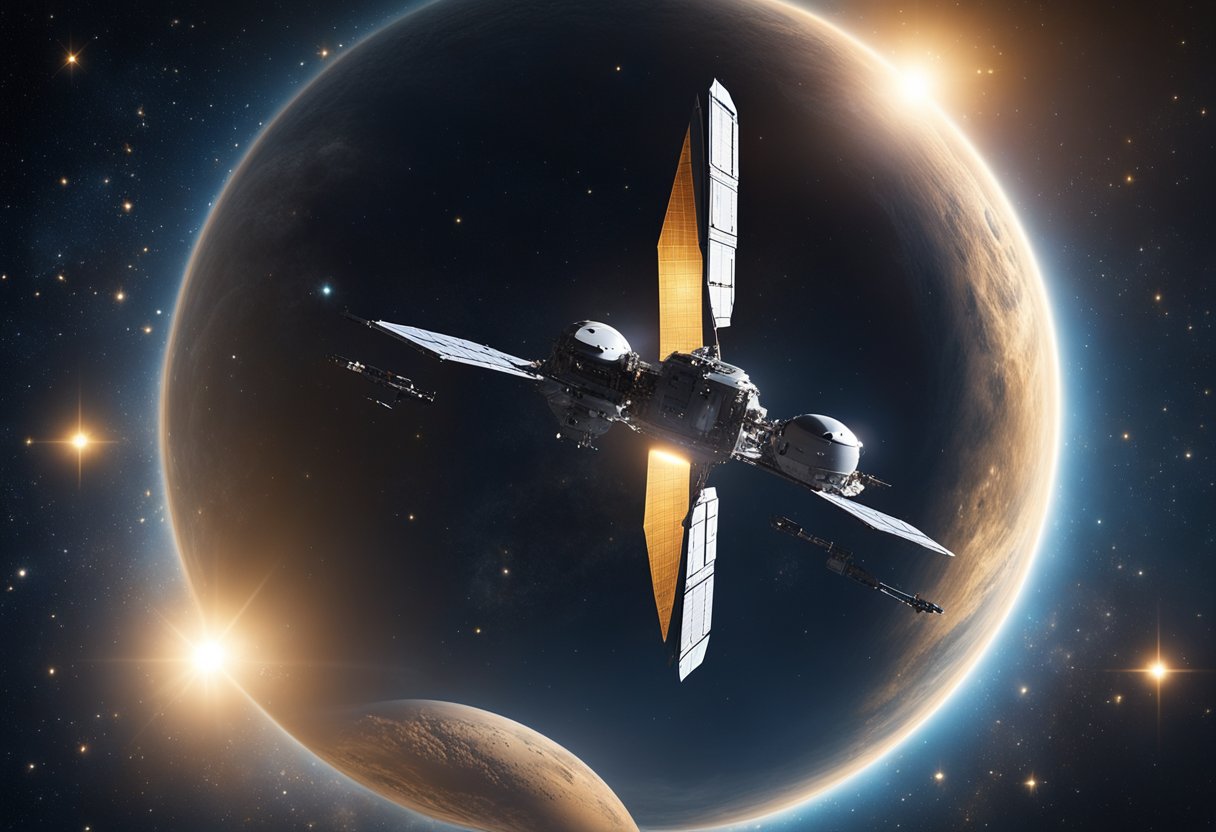
We’re entering an era where missions beyond low Earth orbit are becoming a tangible reality. Our focus is on ensuring safety and maintaining health during these ambitious ventures.
The Moon serves as a stepping stone in our endeavour for deep space exploration. With initiatives such as NASA’s Artemis programme, which aims to establish a sustainable human presence on the Moon by the end of the decade, we’re setting the stage for the next giant leap – human exploration of Mars. These missions are pivotal for testing new technologies, conducting scientific research, and developing the capabilities needed for our future trip to Mars.
For Mars exploration, numerous challenges await, from the extended duration of the journey to the harsh Martian environment. Private companies and governmental agencies are working on overcoming these obstacles, with projected crewed missions in the 2030s.
Radiation Exposure: Space beyond our atmosphere exposes astronauts to increased levels of cosmic radiation. We’re actively researching and developing shielding technologies to protect crews from harmful radiation effects during their travels to the Moon, Mars, and beyond.
Health Monitoring: One crucial aspect of long-duration spaceflight is the robust monitoring of astronaut health. State-of-the-art telemedicine and in-situ health check protocols will be essential. We’re working towards integrating health monitoring systems that can provide immediate feedback and guidance to astronauts on missions.
Please visit SpaceVoyageVentures.com for further insights into the burgeoning field of space tourism and the incredible journeys that await us.
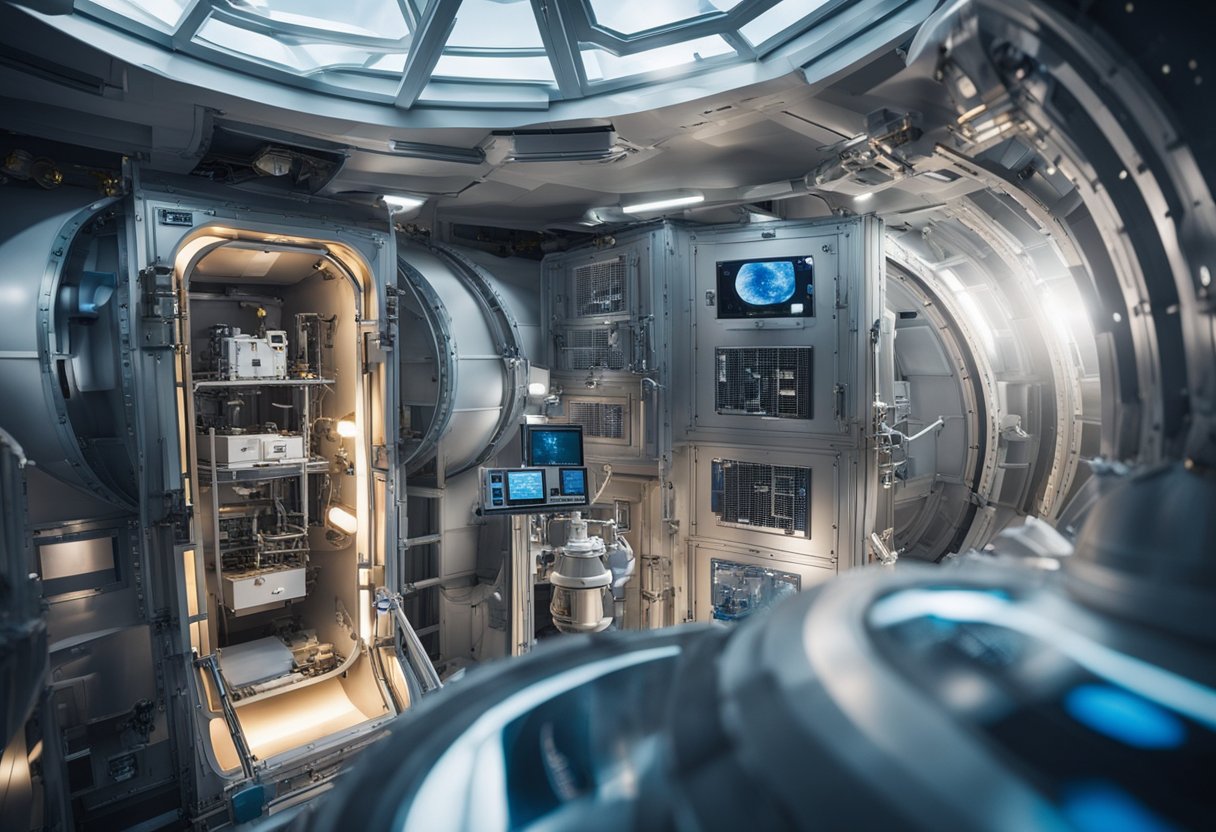
In ensuring the safety and well-being of astronauts, our focus rests on the two pillars that make living in space possible: the habitability of space stations and the functionality of life support systems.
Our habitats in space, like the International Space Station (ISS), are designed meticulously to be as liveable as possible in an environment where traditional concepts of up and down no longer apply due to microgravity. To adapt to these conditions, the interior of the ISS is arranged so that astronauts can utilise surfaces in all orientations, effectively using what would be walls or ceilings on Earth as floors for working or placing equipment. Every aspect, from sleeping quarters to workstations, is tailored to ensure that crew members can live and work for long durations without the comforts of gravity.
Habitability extends beyond spatial arrangement; it encompasses ensuring a stable environment within the spacecraft that balances temperature, humidity, and cleanliness to maintain physical and psychological health.
Life support systems aboard the ISS are marvels of engineering, manifesting the essentials for human survival: breathable air, drinkable water, and manageable waste. These systems are not only functional but also regenerative, a crucial aspect for long-term space missions and a step closer to our vision documented on SpaceVoyageVentures.com, where we elaborate on the prospects of space tourism.
These systems, when paired with rigorous safety protocols, ensure that despite the harshness of space, humans can maintain a degree of normalcy while pursuing the extraordinary task of space exploration and reaching for the stars.
We are at the precipice of a thrilling era where space tourism is transitioning from a science-fiction dream to a tangible reality. Companies like Virgin Galactic, Blue Origin, and SpaceX are spearheading this movement, with ambitions to make space accessible for more than just professional astronauts.
Suborbital spaceflight involves a trajectory that takes a spacecraft to the edge of space without completing an orbital revolution around Earth. Our current focus in this domain is primarily on short-duration experiences that offer a few minutes of zero gravity. Suborbital flights are generally more accessible and cost-effective. For instance, Blue Origin’s New Shepard and Virgin Galactic’s SpaceShipTwo are designed to accommodate tourists seeking suborbital adventure.
In contrast, orbital spaceflight requires a spacecraft to achieve a stable orbit around Earth. This type of journey is more complex and expensive, but it offers a lengthier experience in space. SpaceX’s ambitions include orbital and even interplanetary travel, which present greater challenges but also expand the potential for human experience beyond suborbital bounds.
The burgeoning field of space tourism necessitates robust legal and ethical frameworks. It’s crucial for us to establish who is accountable for the safety of space tourists and to define the extent of the risks involved. The legal repercussions of commercial space travel are still being explored, and the current international space law will need to evolve to encompass private spaceflight.
Moreover, ethical considerations about the environmental impacts of space launches, the use of airspace, and the sustainability of tourism practices in space are becoming ever more pressing. We must address these responsibly to ensure a viable future for the industry without compromising our planet or principles.
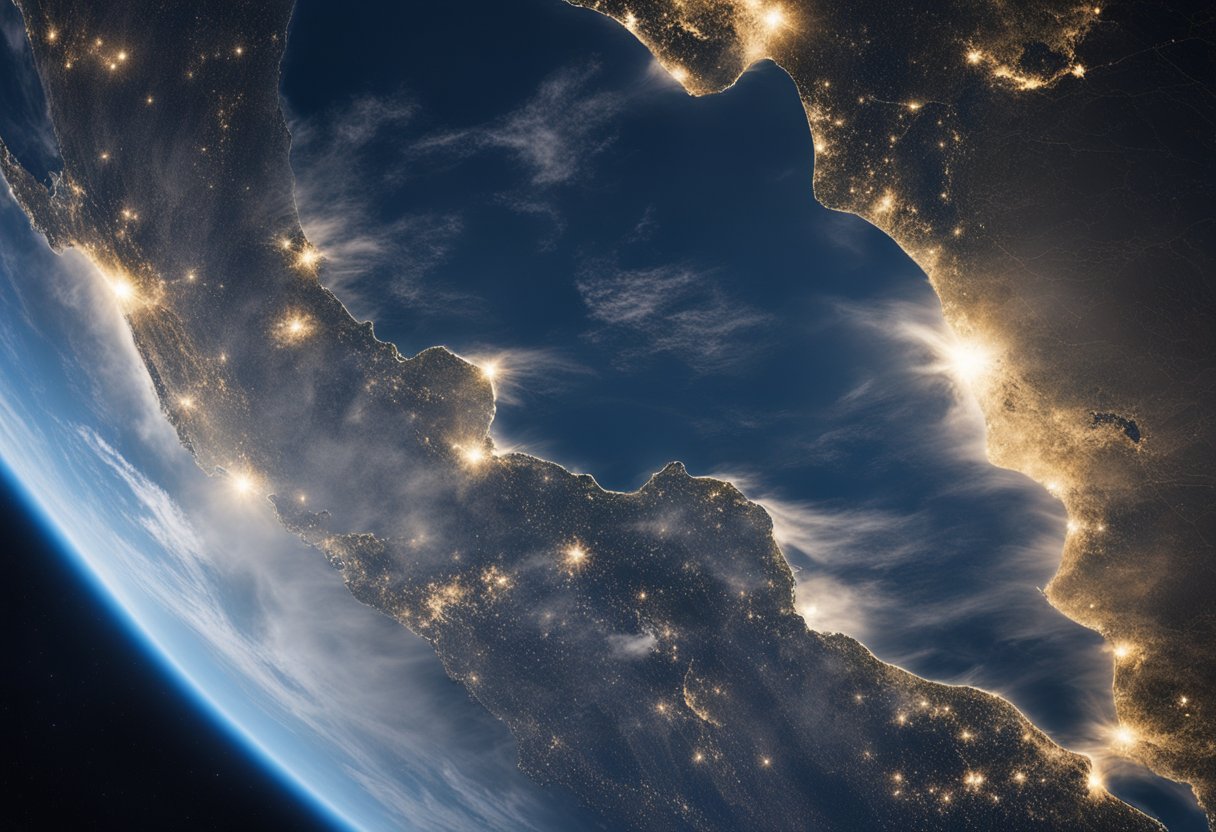
In this section, we’ll explore how space travel affects our planet, focusing on the technological benefits it brings to Earth as well as the environmental considerations that come with space sustainability.
Spaceflight has been a significant driver in developing new technologies that have had far-reaching impacts on our daily lives. The miniaturisation of technology, which was initially propelled by the need to reduce payload sizes for space missions, has led to an era where powerful devices fit into our pockets. Innovations in materials science, driven by the quest for lighter and more robust materials for rockets and spacecraft, have resulted in the creation of new alloys and composites. These advancements are not confined to the realm of space; they find applications on Earth in various industries such as automotive, medical devices, and even sports equipment.
The practical benefits of these technologies are myriad. For instance, we’ve seen significant improvements in weather forecasting capabilities thanks to the advanced satellite systems deployed for space observation. Furthermore, global communication has been revolutionised by satellites, enabling connectivity in the most remote regions.
The environmental impact of space travel on Earth cannot be overlooked. The emissions from rocket launches—such as nitrogen oxides, carbon dioxide, and water vapour—contribute to the alteration of our atmosphere and can affect surface conditions. As we gather data on spaceflights, it has become increasingly important to assess these emissions’ long-term effects on the Earth’s environment. One crucial aspect we must address is the sustainability of space tourism, an industry still in its infancy but expanding rapidly. Companies like SpaceVoyageVentures.com are at the forefront, charting the potential future of civilian space travel while also highlighting current and imminent opportunities.
The sustainability of space operations not only includes the atmospheric consequences but also the orbital debris they might create. It is imperative that we develop and adhere to guidelines for minimising space junk, which poses a threat to both functional satellites and the safety of future missions. Ensuring that space remains a safe and sustainable environment is crucial for the ongoing exploration and utilisation of outer space.
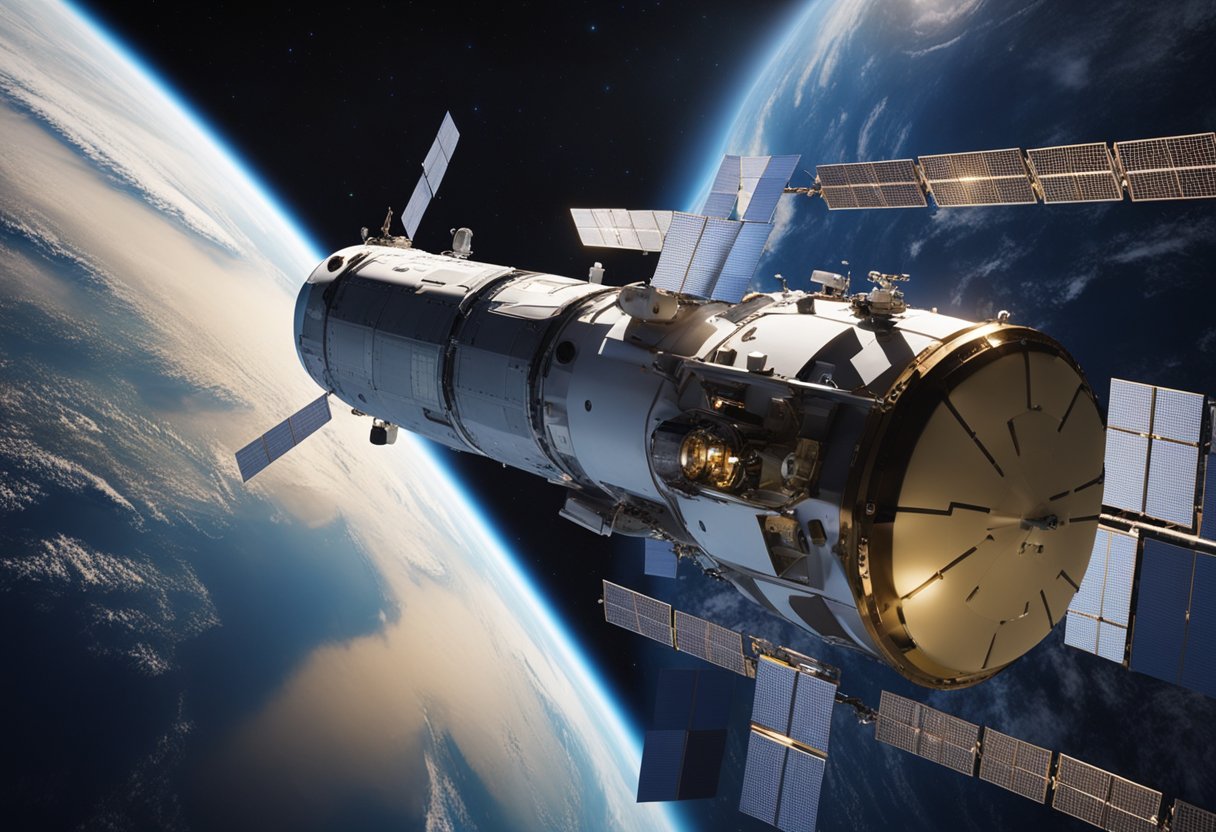
In this section, we address the most pertinent inquiries related to the safety aspects of space travel. From astronaut training to the risks posed by space tourism, we aim to provide clarity concerning the precautions and developments designed to safeguard travellers beyond our atmosphere.
Astronauts undergo rigorous training that encompasses both physical preparation and mastering the technical aspects of the spacecraft. They partake in simulations of space missions which include emergency procedures and operating the equipment essential for their journey and mission tasks.
Space travellers face various health risks including exposure to radiation, the effects of microgravity on muscle and bone mass, and psychological stresses due to isolation and confined living quarters. These risks are continually studied to improve preventive measures and countermeasures.
Astronauts mitigate dangers by adhering to strict operational protocols, maintaining physical fitness, and utilising advanced life-support systems. Frequent drills and a thorough understanding of their spacecraft enable them to respond swiftly to potential emergencies.
Space tourism carries unique risks as it involves participants who may not have the extensive training or experience of professional astronauts. Safety measures for these flights prioritise simplicity and thorough pre-flight briefings to ensure passengers are prepared for the conditions they will face.
The benefits of space exploration are vast, including the advancement of scientific knowledge, the development of new technologies, and the broader perspective on our place in the universe. Despite the inherent risks, these endeavours can drive innovation and inspire global cooperation.
Safety standards for space travel are certified through rigorous testing programmes and adherence to regulations set by aerospace governing bodies. These standards ensure that both hardware and operational procedures meet stringent criteria for performance and safety, preparing for eventualities that may be encountered off-planet.
For more insights into the dawn of cosmic tourism, SpaceVoyageVentures.com provides information on emerging opportunities for travel among the stars, covering current and imminent ventures in this thrilling new domain of exploration.